Flower Meanings
Texas Bluebonnet


The Meaning of the Bluebonnet
As the great state flower of Texas, one of the most popular symbolic references of the bluebonnet is Texas-pride. These blooms are often given or used to celebrate state-related events, and like their home-state, they make quite a statement. [1]
But how did they come to become as big as the state of Texas, you might ask?
We’re here to tell you!
We’ll start with some myths and legends before diving into the bluebonnet’s history a little later.
Because of the bloom’s unusual beauty, of course, there will be some exciting lore and legends that it has picked up along its journey. One legend tells the tale of a Native American girl named She-Who-Is-Alone.
Okay, a little dark, but we’re listening.
During a long, drawn-out period of drought, the chief of She-Who-Is-Alone’s tribe asked everyone to sacrifice an important possession to the Great Spirits. None of them would.
Enter our star, She-Who-Is-Alone.
She was the only one to sacrifice an important possession of hers to the Great Spirits. She stepped forward with a gift from her long-lost parents: her most beloved doll. The Great Spirits were kind to the young girl and admired her bravery. The rain immediately began to fall and, along with it, a great field of beautiful bluebonnets.
Thus, the bluebonnet has also come to symbolize bravery and sacrifice, along with its great Texas-pride!
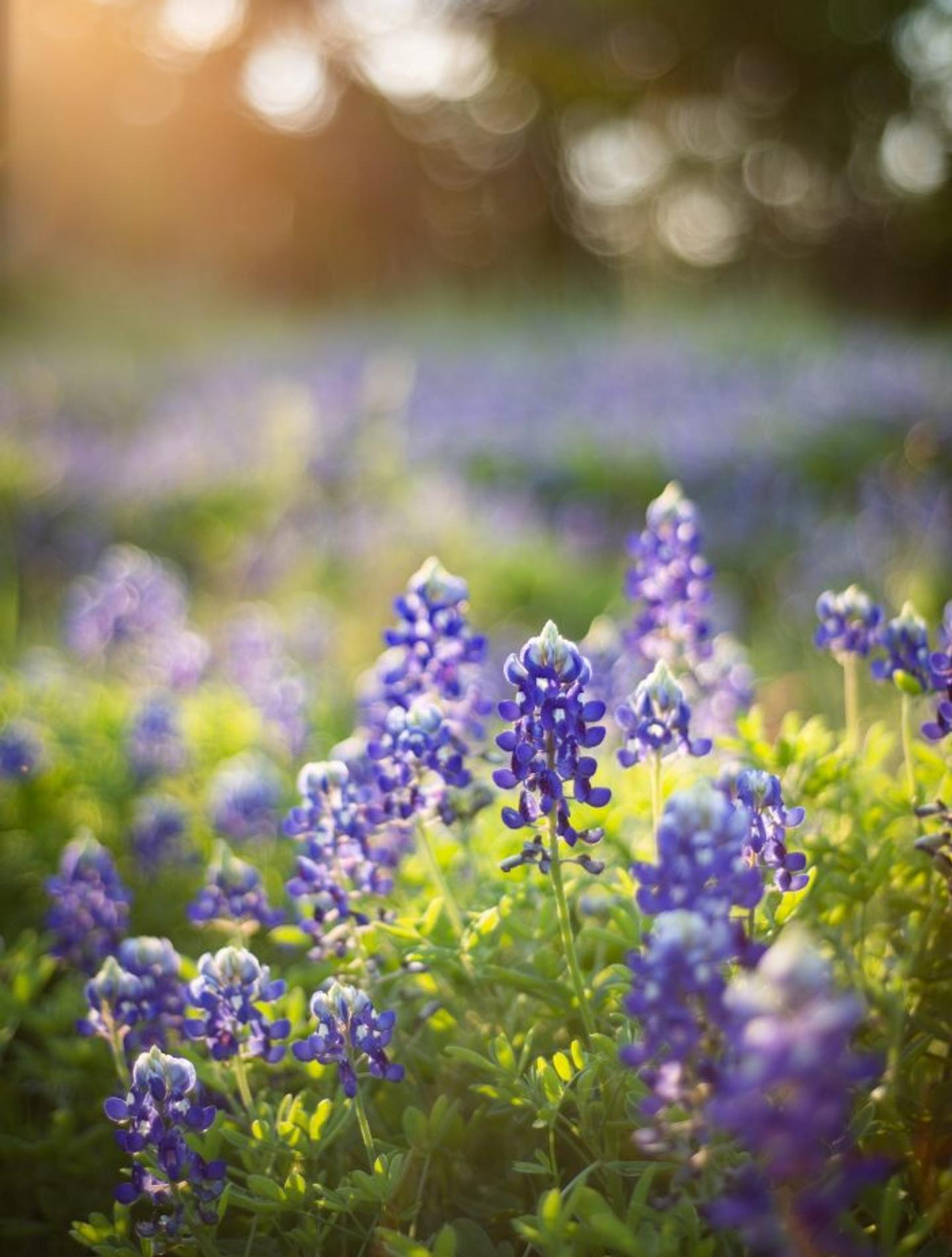
"But in the state of Texas, we can say That springtime has a quite distinctive hue; The state’s official flower has its day, And crowns the grassy green with royal blue. The bluebonnets can be seen far and wide Beside each farm road, interstate, and route. For passersby, the bluebonnets provide A charming roadside floral photo shoot."
Fr. Richard Libby
The History of the Bluebonnet
Today, anyone who drives down a Texas highway can see the high regard with which Texans hold these blooms. The Texas Department of Transportation even has a wildflower program that buys and sows about 30,000 pounds of wildflower each year – with a considerable portion going directly towards bluebonnets.
People come from all over the country, even the world, to see Texas’s wild bluebonnets. They have become a staple photo-op for visitors and locals alike!
In addition to folklore and legend, multiple stories tie into the arrival of the very first bluebonnet in Texas.
One of these stories actually comes from a history professor at the University of North Texas, Randolph Campbell. Campbell has been teaching at UNT for many years. On top of teaching history, he also serves as the chief historian for the Texas State Historical Association. In his book “Gone to Texas,” Campbell tells the story of Spain moving into the Albuquerque area (present-day New Mexico) in the early 1700s. A lot of missionary work was taking place during this time between religious leaders, leading to strange occurrences revolving around a Spanish nun named María de Jesús de Agreda. Agreda was a member of the Poor Clares Order of Franciscan nuns and someone that the Jumano Indians claimed mysteriously appeared to them in Texas.
“She was wearing a blue cloak over her nun’s habit,” says Campbell. They called her the ‘Lady in the Blue.'”
The Jumano Indians claimed to have learned about Christianity from her, specifically the symbol of the cross.
María de Jesús de Agreda claimed to have, miraculously, physically appeared in two places at once – Texas and New Mexico – without ever leaving her convent in Spain. The Texas legend concerning the “Lady in the Blue” came from the Jumano Indians, who said that the nun’s spirit left behind something blue and powerful in their fields.
“The Indians said that on the morning after her last visit, they awoke to find a field of covered with flowers that were deep blue – the color of her cloak,” Campbell said. “They call this the legend of the first Texas bluebonnets.”
The bluebonnet has now been the Texas state flower for over 116 years! [2]
DID YOU KNOW - Bluebonnet Fun Fact
Late-March to mid-April is prime bluebonnet gazing time! [5]
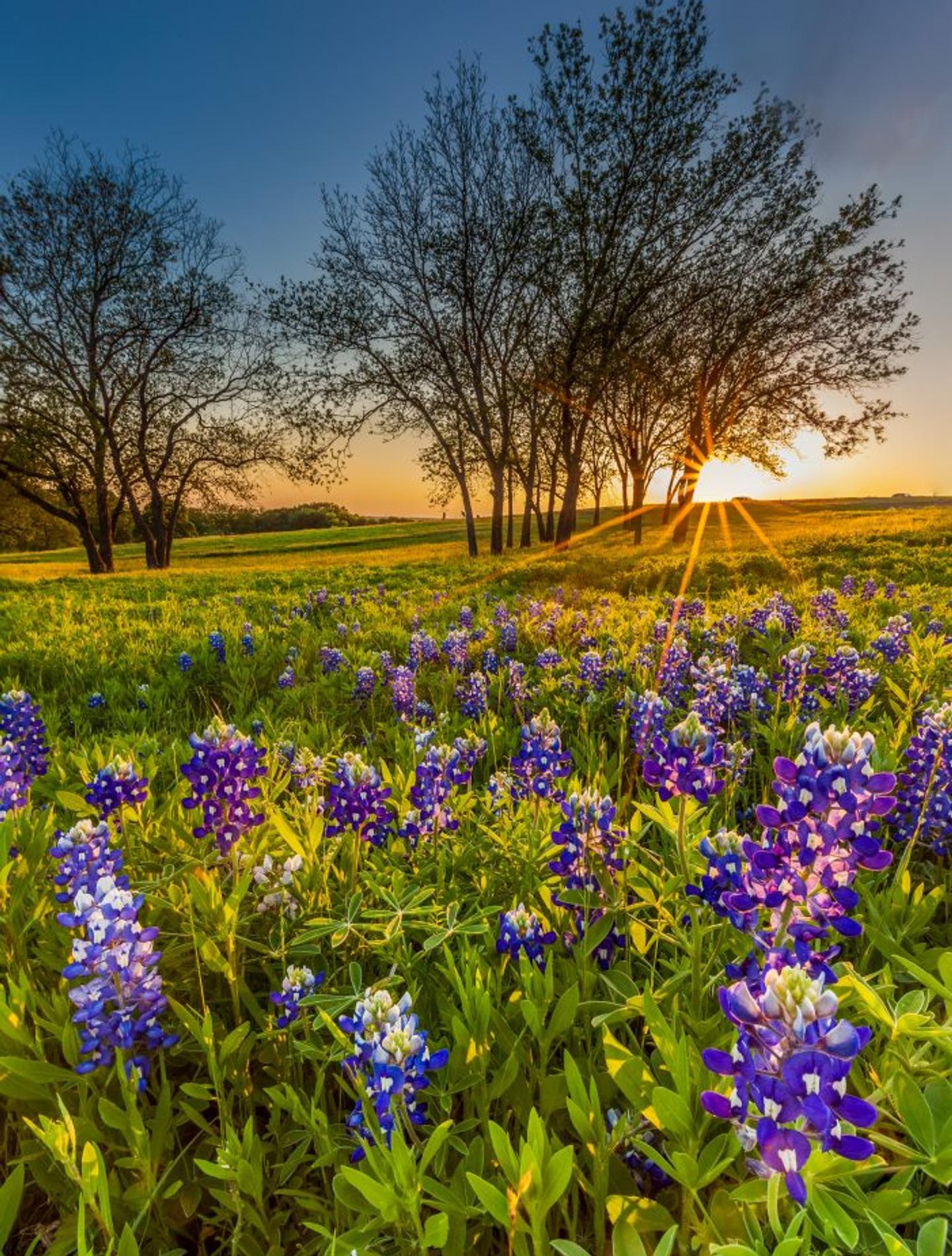
How to Grow Bluebonnets
All it takes is a little patience and a little heart to create your own little patch of bluebonnets.
They can be just a little tricky to establish in the beginning stages, but that’s where the heart and patience come in.
Not all is lost; however, once your bluebonnets get going, they’ll thrive like nothing you’ve ever seen before.
Plant your seeds in October and November – early October is best. As annual plants, they will go from seed to flower to seed in one calendar year. They will germinate in the fall and grow throughout the winter, usually blooming around the end of March to mid-May. Next, they will form a seedpod where the seeds will then mature. Once the seedpods open, they will release small, hard seeds.
Since the Texas bluebonnet has, over time, adapted to the rocky, alkaline soils of the Hill Country, as well as frequent periods of drought, they actually thrive in heavily disturned and relatively poor soils.
First, you’re going to want to mow the vegetation to 6-8 inches and rake up the thatch. Try to open up some bare areas as well to allow the seeds to make contact with the soil. Next, plant your seeds on a lightly roughened soil surface.
Pro-tip: When planting bluebonnets from seed, good seed-soil contact is essential.
This helps the soil retain moisture around the seeds, which is necessary for germination. Then press the seeds firmly into the ground with your hands or walk over the planting area.
When watering your bluebonnets, use light, well-spaced waterings. You don’t need to fertilize these blooms because they have already adapted to alkaline soils that are generally low in nutrients. Fertilizing is not usually recommended at all as it can encourage weak plants that grow more leaves than flowers.
No, thanks, we’ll pass!
Your bluebonnet seeds will usually mature about 6-8 weeks after flowering. Keep in mind that mowing after the seeds have matured will allow them to reseed for next year. [3]
DID YOU KNOW - Bluebonnet Fun Fact
All six Texas bluebonnet species are the state flower. [5]
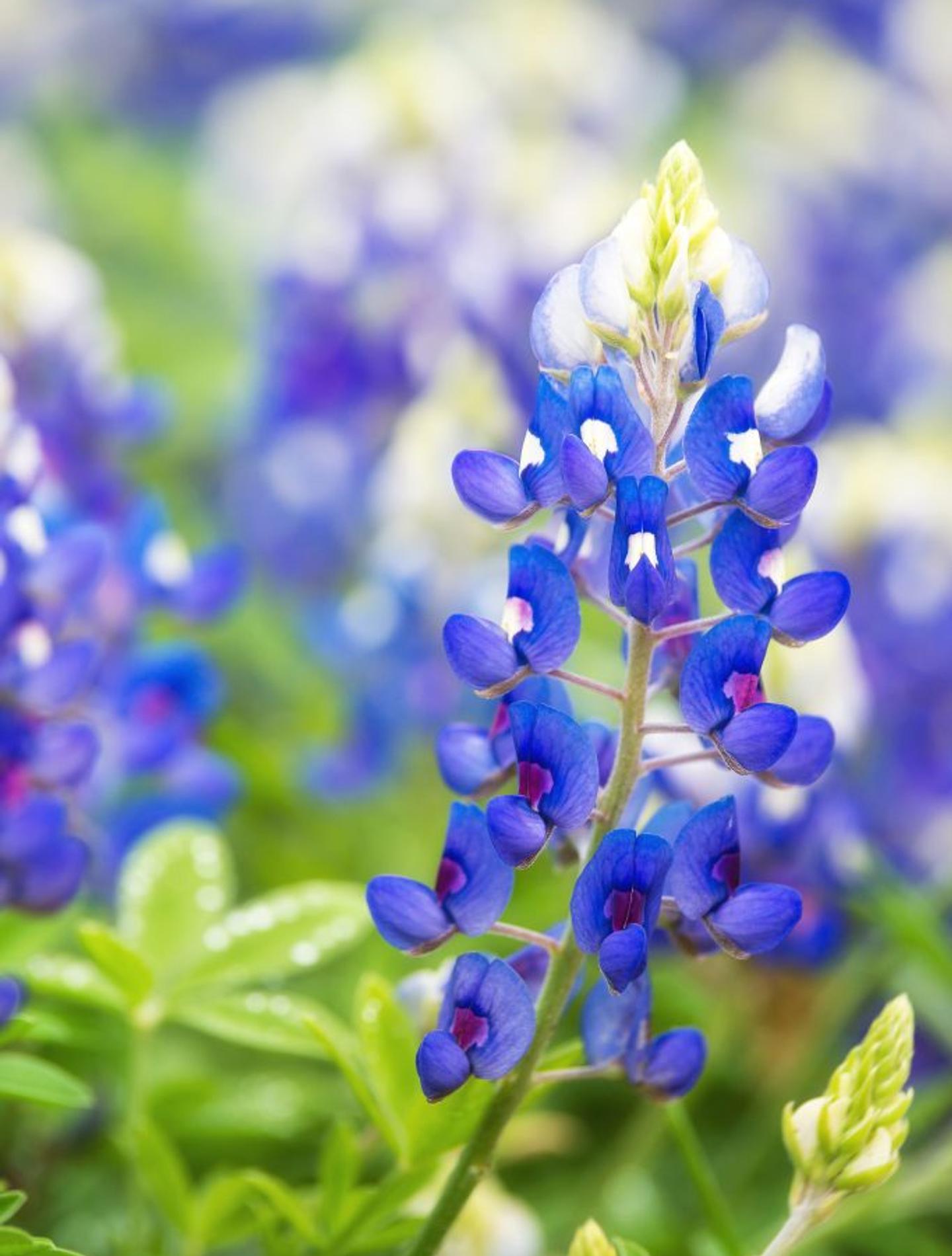
How to Care for Bluebonnets
If you’re looking to bring some of these beauties inside to spruce the place up a bit, you’ve come to the right place.
Grab some sharp scissors or shears and head on outside!
Clip the bottom of the flower’s stalk, ideally in the morning when the blooms are most hydrated. Immediately place your freshly cut stems in a bucket of water.
Pro-tip: If you’re picking bluebonnets from anywhere outside of your own property, be sure to ask the owner permission before you get to clipping! (Especially if it’s government property, as many states have laws against this). [4]
While traditional bluebonnets don’t have the longest vase-life as cut flowers, other cultivars, such as Lupinus havardii or Big Bend bluebonnets, have been recently developed. This specific cultivar has a short growth time, yield plenty of blooms, and has a long vase life! [3]
If you’re looking for bluebonnets to keep in the house or in an arrangement perhaps for a wedding or as a centerpiece for an event, contact your local florist to see if they happen to have any or can get their hands on some for you!
When to Send Bluebonnets as a Gift
Give bluebonnets as a gift for any Texas-born southern belle, or to show admiration and bravery!

References:
- 1 - Flower Info
- 2 - Khou
- 3 - Wildflower
- 4 - Home Guides
- 5 - Austin
Flower Meanings — keep discovering
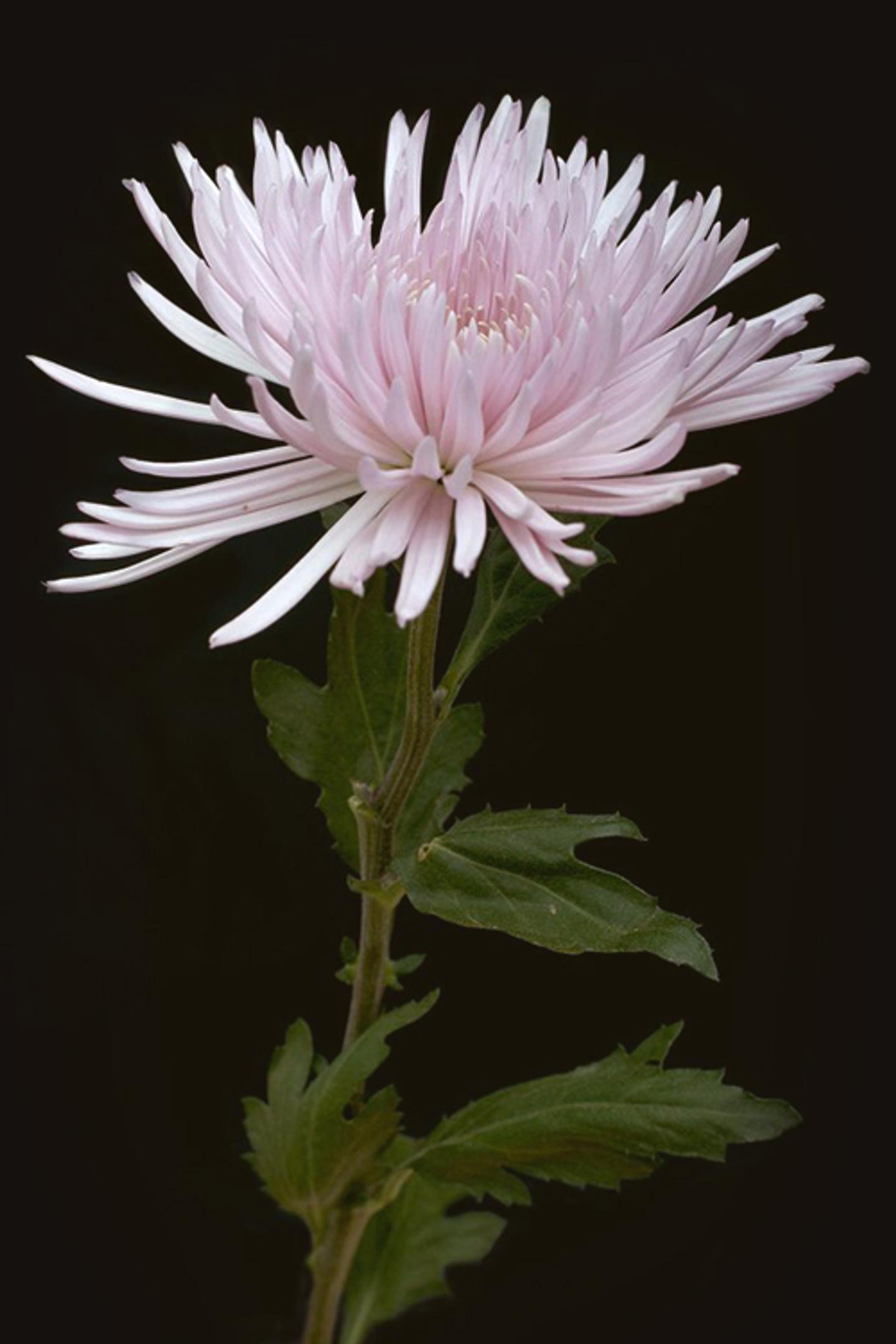
Spider Mum
A funky member of the chrysanthemum family, spider mums are known for their unique, spider-looking petals!
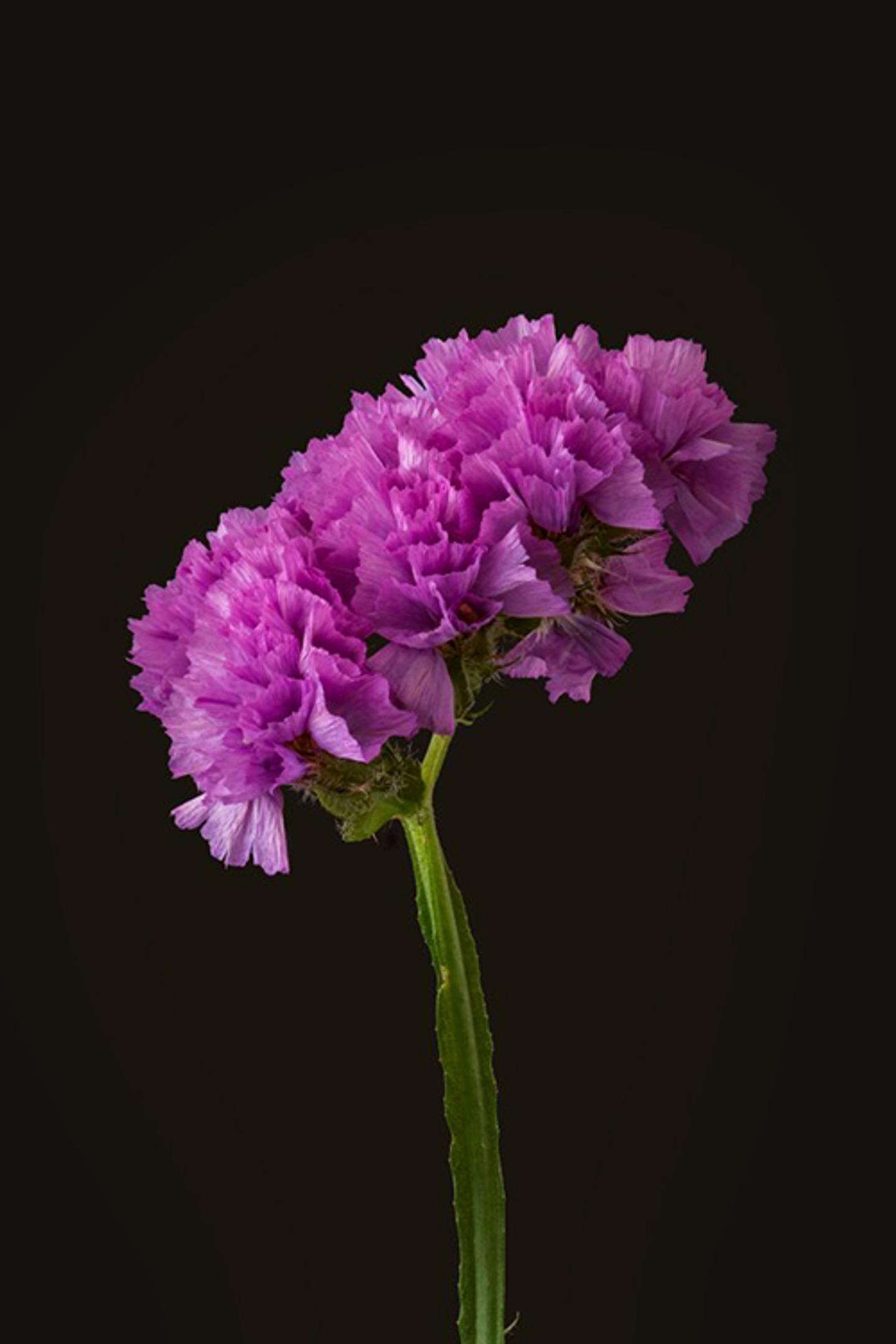
Statice
A part of the Limonium family, you’ll often see statice used in fresh and dried flower arrangements due to its beautiful shades and unique shape. Plus, there are over 120 different species of statice!
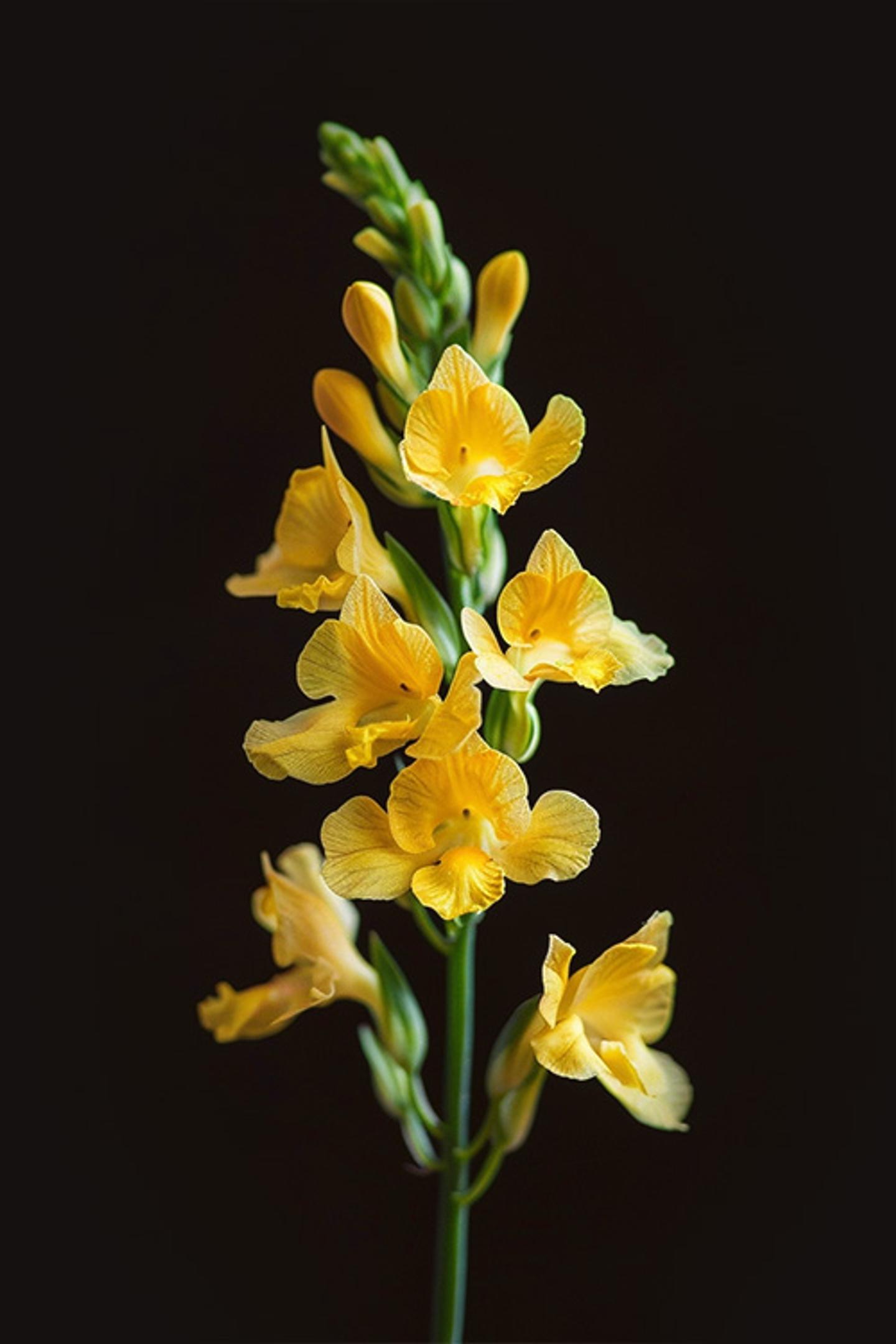
Stock
Stock is not just your average beautiful bloom! They’re also known as one of the easiest plants to grow. Stock are festively fragrant, come in a variety of colors, and are named…stock…huh? Don’t worry we’ll get into how these stunning blooms got their name in just a bit…

Sunflower
What’s more joyful than a sunflower? Their huge, yellow-orange blooms tower over the garden, but they make up for stealing the show by providing seeds, feed, and pollen. Sun-seekers, summer lovers, and snowbirds who flock south at autumn’s first chill, this steadfast symbol of sun-worship is for you.

Spider Mum
A funky member of the chrysanthemum family, spider mums are known for their unique, spider-looking petals!

Statice
A part of the Limonium family, you’ll often see statice used in fresh and dried flower arrangements due to its beautiful shades and unique shape. Plus, there are over 120 different species of statice!

Stock
Stock is not just your average beautiful bloom! They’re also known as one of the easiest plants to grow. Stock are festively fragrant, come in a variety of colors, and are named…stock…huh? Don’t worry we’ll get into how these stunning blooms got their name in just a bit…

Sunflower
What’s more joyful than a sunflower? Their huge, yellow-orange blooms tower over the garden, but they make up for stealing the show by providing seeds, feed, and pollen. Sun-seekers, summer lovers, and snowbirds who flock south at autumn’s first chill, this steadfast symbol of sun-worship is for you.
Ready to send beautiful flowers?
Our guided experience helps you send a one-of-a-kind arrangement perfect for every occasion.
Send Flowers